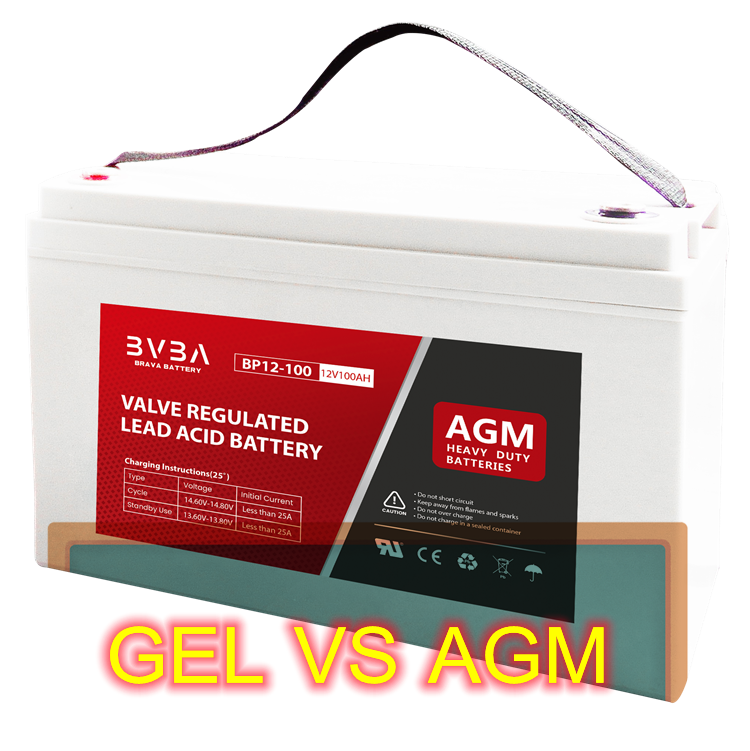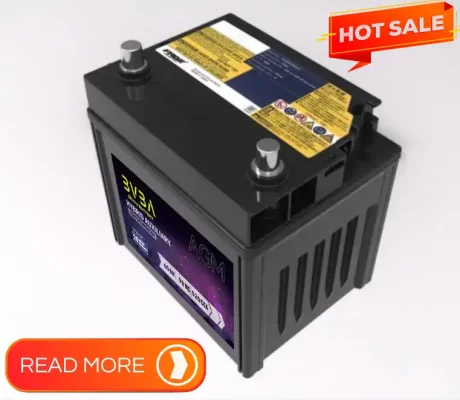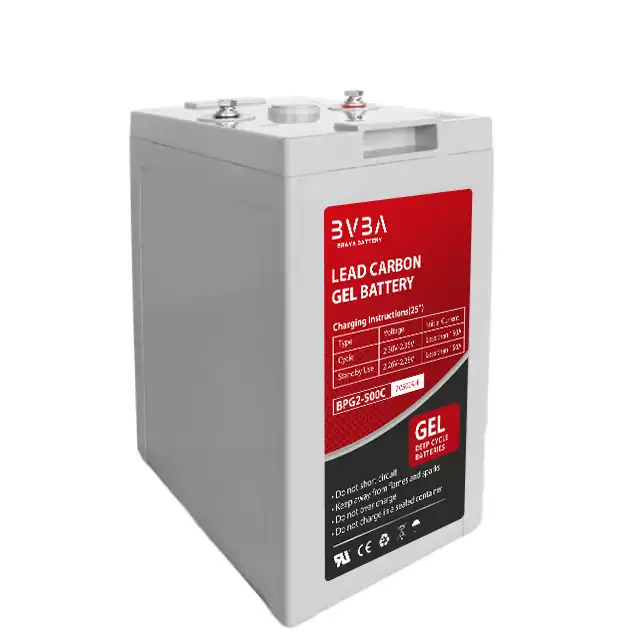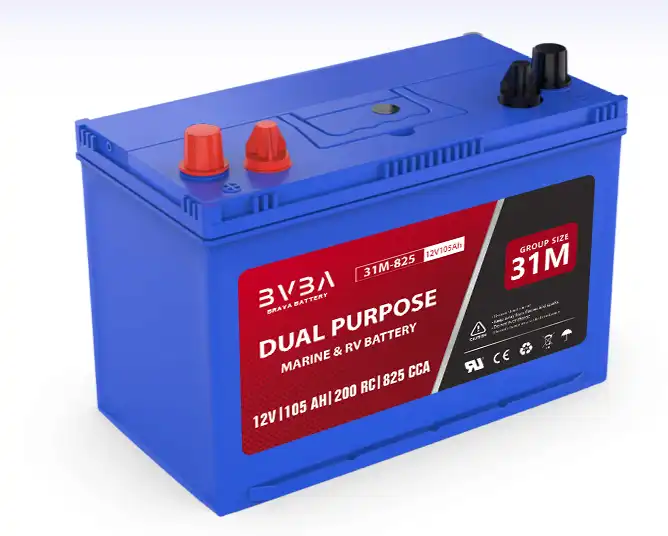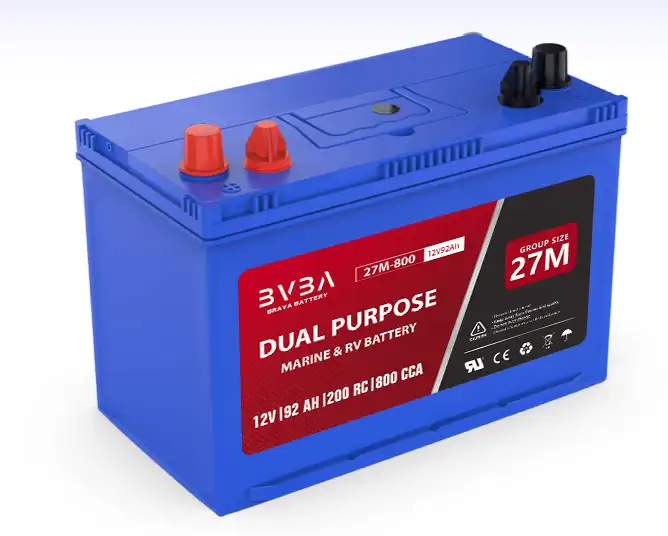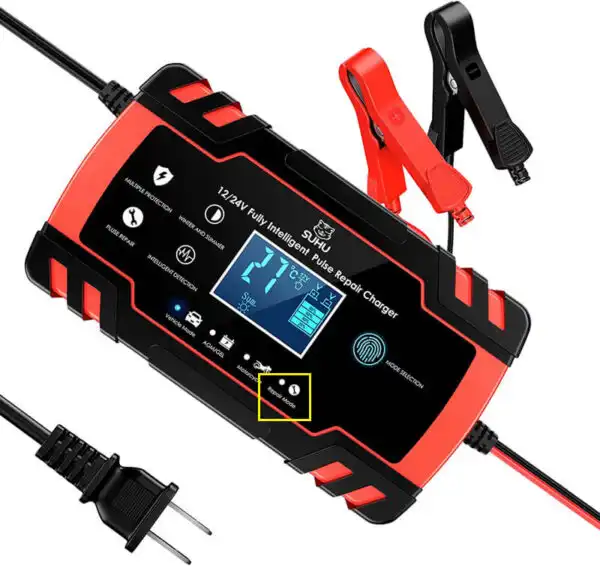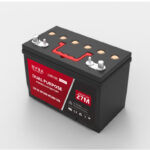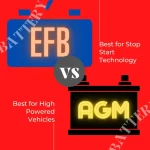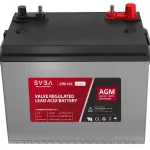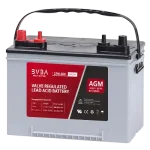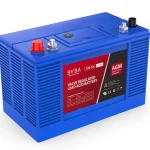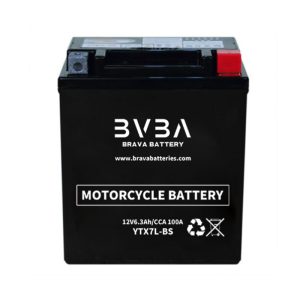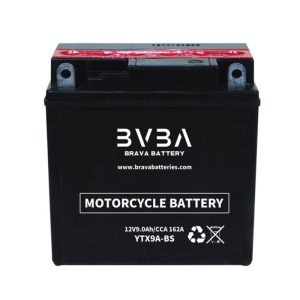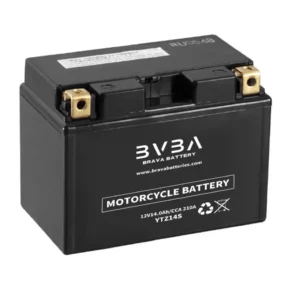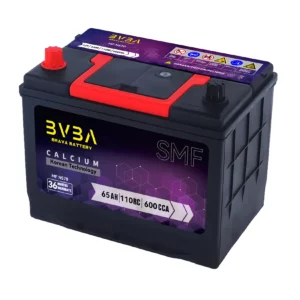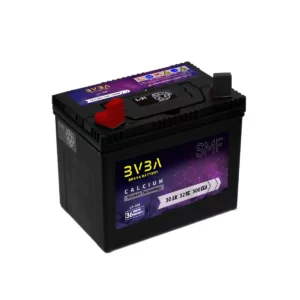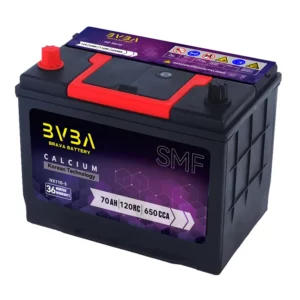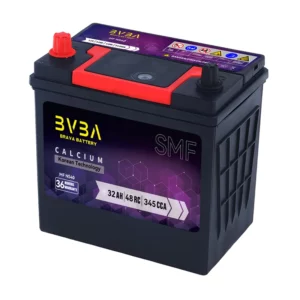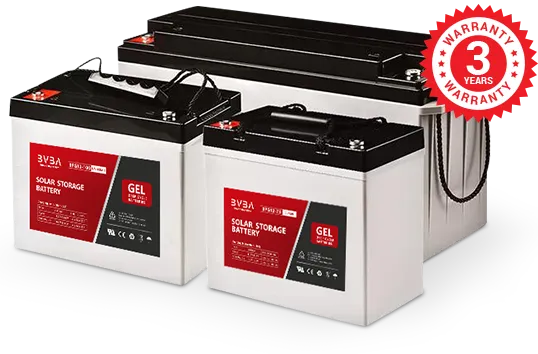The Valve Regulated Lead-acid batteries include AGM and gel technology. These are also known as SLA. People get confused and consider them to be one and the same for the similar core of attributes.
The striking difference between the two is the electrolyte. The electrolyte in Gel batteries have a look of jelly, but the AGM batteries have electrolytes absorbed in glass mat like separators. The gel batteries can work in warmer temperatures, while AGM batteries work efficiently in cold temperatures.
There are more differences between them. Let’s have a discussion on the comparison and choose the right one according to your need.
What is an AGM battery?
AGM battery is made by holding the electrolyte in place by a separating membrane. The battery works by the capillary properties of the membrane. These membrane’ batteries are made of fiberglass mat.
By producing a very thin separating membrane, high output power can be created with batteries of relatively small size.
The AGM batteries are recombinant, and so the Oxygen and Hydrogen recombine inside the battery.
This utilizes the gas phase transfer of oxygen to the negative plates to recombine them back into the water while charging and prevent the loss of water through electrolysis.
The best part is the recombining is typically 99+% efficient, so almost no water is lost.
AGM or dry cell batteries are the newest type and safer than wet cells. It is also a durable choice for moving from one place to place.
What Is A Gel Battery?
A specific mixture of silicon is added to the battery acid to transform the electrolyte into a gel-like substance in the gel batteries.
By the drilling of channels in the gel, gaseous oxygen goes from the positive terminal to the negative terminal.
It gets hydrogen gas and recombines into the water, releasing energy.
These batteries are quite resistant against excessive deep discharge and retain the operation even at the discharge of the battery to 20% of the nominal capacity.
Actually, Gel Batteries come with great capacity.
How To Recognize AGM and Gel Batteries?
The AGM lead-acid batteries will be labeled as AGM, or Absorbed Glass Mat, or dry cell, sealed regulated valve, non-spillable, or valve-regulated on the label.
On the other hand, the gel-filled lead-acid batteries come with a Geld filled’ label on the battery.
AGM batteries are also called starved electrolyte’, or membrane batteries.
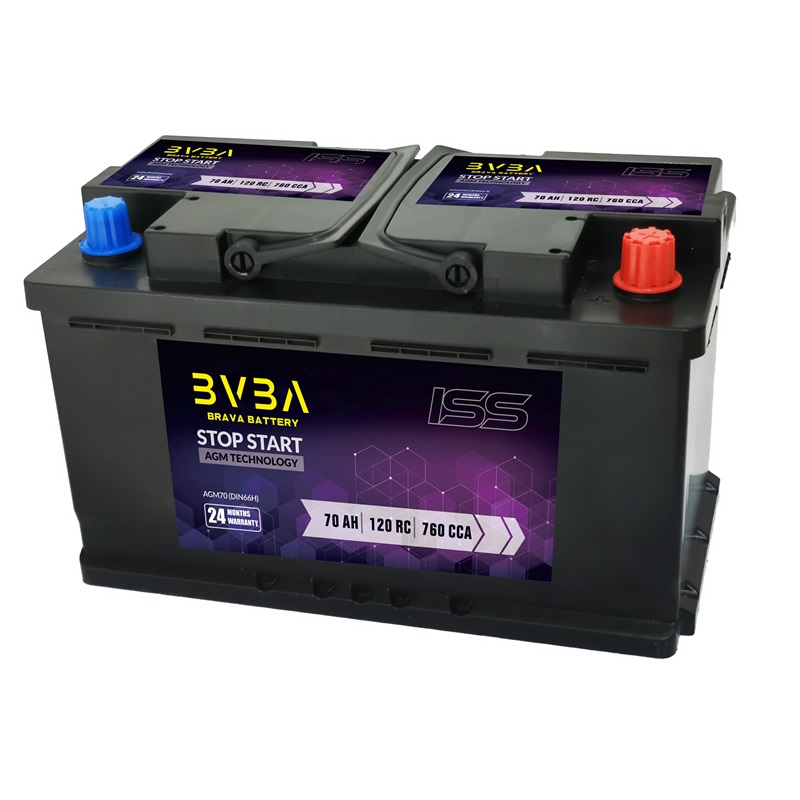 |
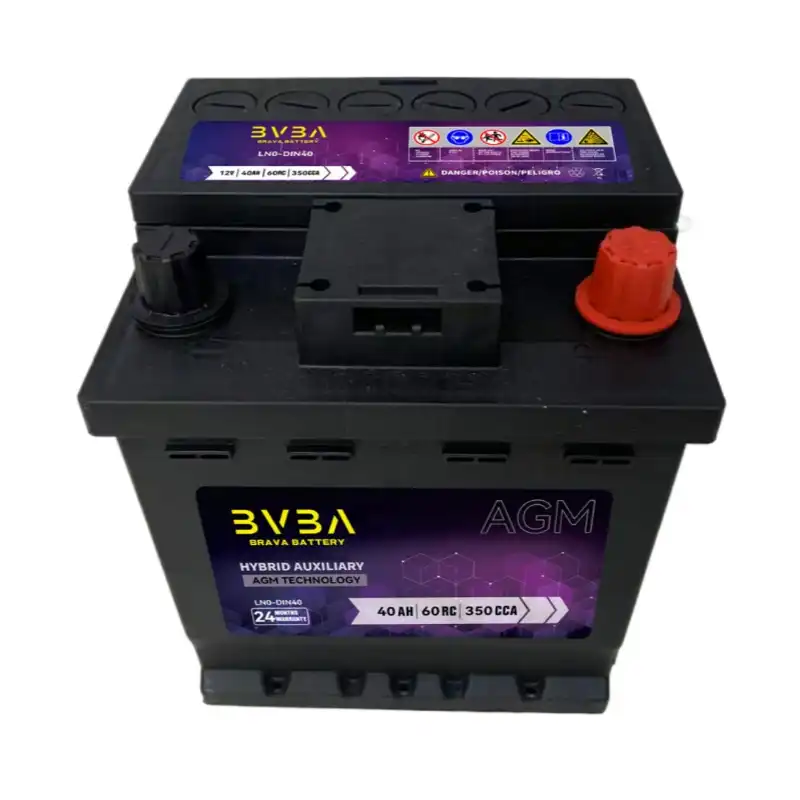 |
|
What is the difference between GEL and AGM batteries?
The agm vs gel batteries have a clear difference between them. They are different in electrolytes, made for different uses. Let’s have a glance at the key differences between these two types of batteries.
| Features | AGM Battery | Gel Battery |
| Power | Suitable for high amp with a very slow self-discharge rate | Suitable for lower high amp |
| Charging | Easy | Delicate and needs caution |
| Lifespan | 4 to 8 years | 2 to 5 years |
| Current | Suitable for higher currents | Warmer weather |
| Temperature | Colder weather | Warmer weather |
Vibration
Since the thick AGM separator’s precision assembly comes with a tightly compressed book of plates, it resists vibration.
The electrolyte-soaked glass mats in between the lead plates act like a damper.
Additionally, it also recharges faster and cycles more.
On the other hand, gel batteries also come with great vibration-resistant. However, it is lower than the agm batteries.
Capacity
For the large range of temperature, the AGM batteries can work at optimal capacity.
Besides, this type can work great for all high amp with a very slow self-discharge rate. That means you won’t waste much energy while leaving plugged.
These batteries have the power to start a car engine more than 60,000 times which is around 3x more than what traditional batteries can do.
On the other hand, gel batteries come with a lower power capacity. This battery is suitable for a relatively low burst of amps.
Charging
Agm batteries get charged very easily and hold the charge very well. Most importantly, it lasts longer than other batteries in demanding applications.
Since the charging voltages are the same as for any standard battery, there is no need for any special adjustments or problems with incompatible chargers or charge controls.
And for the extremely low internal resistance, there is almost no heating of the battery even under heavy charge and discharge currents.
On the contrary, get batteries are delicate. And if you make some mistake in the charging, it will ruin the battery completely.
They must be charged at a slower rate(C/20) to prevent excess gas from damaging the cells.
You can’t use the conventional automotive charger to get the gel batteries fast-charged.
Battery lifespan
According to the depth of discharge, temperature, maintenance, and how often and how deep cycled, the lifespan of agm batteries is around 4 to 8 years and gelled deep cycle battery is around 2 to 5 years.
Actually, the lifespan varies considerably with how it is used, how it is charged and other factors.
Discharge
The AGM batteries have no charge or discharge current limits. Most importantly, AGM’s have a very low self-discharge – from 1% to 3% per month.
So, they can sit in storage for much longer periods without charging than standard batteries. Gel batteries are best suited for deep discharge as they are more acid starved.
Price
AGM batteries are less expensive than gel batteries, and that’s why the former outsells the latter at about 100 to 1.
Maintenance
Gel batteries require very little maintenance, while AGM batteries require regular watering.
What Are The Similarities Between Agm And Gel Batteries?
Since these batteries are SLA batteries, spill-proof and low-maintenance, these are more similarities
For the design: Both batteries have flat tops except for the positive and negative ends.
After a hard shake: These batteries won’t wiggle when you keep them still after a hard shake.
Flexible and non-spillable: These batteries are flexible as you can mount them anywhere.
Caution: The batteries can get easily damaged if the charging current is too high. You can’t use a regular battery charger on these dry cell batteries.
Advantages of AGM Batteries:
The advantages of AGM batteries over gel batteries include:
- AGM batteries can be discharged at a higher rate than gel batteries, making them ideal for applications where a high discharge rate is required.
- AGM batteries require less maintenance than gel batteries, as they do not need to be watered regularly.
- AGM batteries are typically less expensive than gel batteries.
- AGM batteries are typically lighter than gel batteries, making them easier to transport and install.
- AGM batteries can be used in wider temperatures than gel batteries.
Disadvantages of AGM Batteries:
The disadvantages of AGM batteries over gel batteries include:
- AGM batteries have a shorter life span than gel batteries, as they are not made with as thick plates.
- AGM batteries cannot be used in applications requiring a long life span, such as in standby power systems.
- AGM batteries are more sensitive to temperature than gel batteries, and extreme temperatures can affect their performance.
- AGM batteries are more likely to leak than gel batteries, as the electrolyte is not as well-sealed.
Advantages of Gel Batteries:
The advantages of gel batteries over AGM batteries include:
- Gel batteries have a longer life span than AGM batteries, as they are made with thicker plates.
- Gel batteries can be used in applications where a long life span is required, such as standby power systems.
- Gel batteries are less sensitive to temperature than AGM batteries, and their performance is not as affected by extreme temperatures.
- Gel batteries are less likely to leak than AGM batteries, as the electrolyte is better sealed.
- Gel batteries typically come with a more extended warranty than AGM batteries.
Disadvantages of Gel Batteries:
The disadvantages of gel batteries over AGM batteries include:
- Gel batteries can be discharged at a lower rate than AGM batteries, making them less ideal for applications requiring a high discharge rate.
- Gel batteries require more maintenance than AGM batteries, as they need to be watered regularly.
- Gel batteries are typically more expensive than AGM batteries.
- Gel batteries are typically heavier than AGM batteries, making them more challenging to transport and install.
- Gel batteries can only be used in a limited range of temperatures, as extreme temperatures can damage them.
Which One Is For You – AGM Or Gel Battery?
It actually depends on the features of the specific battery you want to purchase.
Quick charging or high discharge can cause severe damage to a gel battery.
But agm batteries come up with a modern idea with the same concept of gel battery – more flexibility and higher performance.
However, the advantage of gel batteries is that it is quite impossible to spill acid even if they are broken. But they have to be charged at a lower voltage (2/10th’s less) than AGM batteries.
Tip: For 12-volt Gel or AGM batteries, the average use of seven years is perfectly normal. The battery can still be used if only 50 % of the battery capacity is actually required.
Why should you go for AGM battery?
Perfect for the operation when a burst of amps is required.
Comes with a longer lifespan
Sometimes 5 times faster recharge rate.
Preferable as a starter battery
Less expensive
Have a low internal resistance.
Good for below 32 degrees.
Have higher cold cranking amp (CCAs)
Some Recommended AGM Batteries
The 100Ah battery comes with Proprietary quinary alloy plates and specially treated plate grids. It reduces the monthly self-discharge rate below 3% at 77℉ (25℃), which is 5 times lower than their flooded counterparts
It is also a heavy-duty battery that comes with the calcium-alloy grid that provides exceptional performance and service life.
Why Should You Go For Gel Battery?
Suitable for warmer environments.
Compatible with deep discharge rates.
– You can use this battery in solar energy storage, electric cars, ventilators in health facilities, and so on.
Some Recommended Gel Batteries
This is a 12 volt 35 Ah maintenance-free battery which can be carried to any place.
This is a 200Ah hybrid gel battery which has corrosion-resistant grids that enable more than 750 discharge cycles at 50% DOD in cyclic applications.
AGM vs. Gel Batteries: Which is better?
The answer to this question depends on the specific application. For most applications, AGM batteries are a better choice than gel batteries.
However, gel batteries may be the better choice for applications with a long life span. Ultimately, the decision of which type of battery to use should be based on the application’s specific needs.
Conclusion
So, which is the ultimate winner between AGM vs Gel battery?
The AGM and GEL batteries are recombinant, and so both are spill-proof and can be installed in any position. But their electrolytes are discharging level make them appropriate for different tasks.
So, go for one which meets your need. And don’t forget to let us know.
FAQ
How many years will a gel battery last?
The life of the gel battery needs to be based on specific conditions. One is the applicable environment. If the ambient temperature is high, generally speaking, based on 25 degrees, its life will be reduced by half for every 10 degrees. Another is the charging conditions. If the gel battery is often undercharged, the battery will soon fail, and the charging capacity of a single cycle should be more than 1.2 times the discharge capacity.
Can you charge a gel battery with a AGM charger? Why do gel batteries need a special charger?
You can’t charge a gel battery with an AGM charger. The gel battery will not fully charge, which may damage the battery slowly. Gel batteries on an average rate of 14.4v, slightly lower than AGM. Exceeding this may cause bubbling of the electrolyte, and permanent damage may occur. This is the reason why gel batteries need a special charger. We can sum this up as AGM vs gel battery as normal charger requirement vs special charges requirements, respectively.
The pros and cons of a gel mat battery
Gel mat batteries have a longer lifespan in extreme conditions. This is the opposite of the AGM batteries, which are volatile in extreme conditions. They are also easy to maintain, as hydrogen gas is evolved when they are charging, this helps in safeguarding the plates from corrosion. Indeed, the maintenance of AGM vs gel battery is labor intensive and less intensive, respectively. However, gel batteries require special chargers and regulators. if normal chargers are used, there will be damage to the cells.
Can I add distilled water to a gel battery?
No. Gel batteries do not require distilled water as the cells are sealed off.
How do you revive a dead gel battery?
Gel batteries cannot be revived; however, with proper recharging, they can serve you for a few months even though cold weather conditions will corrode them fully.
Can a battery be both AGM and gel?
This is quite difficult as the battery incorporations differ; AGM vs gel battery are silica and gel paste, respectively.
What are the major differences between AGM vs gel battery?
There are several key differences that distinguish AGM vs gel battery, they are both internal and external. The acids in an AGM battery are absorbed by the glass mat, while in gel, it is mixed in the electrolyte to form a chemical reaction. Secondly, when comparing low temperature performance of AGM vs gel battery, the latter is better than the former. Thirdly, the AGM battery is expensive to maintain, while the gel needs to be recharged and stays for months; other differences between AGM vs gel battery are summarized below:
| Elements | AGM battery | Gel battery |
| Electrolyte and its fixation method | Using pure sulfuric acid aqueous solution as the electrolyte, most of the electrolyte exists in the glass fiber membrane except for a part of the electrolyte absorbed inside the plate. | It is made of silica sol and sulfuric acid. The concentration of sulfuric acid solution is lower than that of AGM type batteries, and the amount of electrolyte is 20% more than that of AGM type batteries. This electrolyte exists in a colloidal state and is filled in the separator and between the positive and negative electrodes. The sulfuric acid electrolyte is surrounded by the gel and will not flow out of the battery. |
| Assembly structure | Starved-electrolyte tight assembling | Flooded non-tight assembling
|
| Discharge capacity | About 10% lower than that of gel batteries | Higher than that of AGM batteries |
| Internal resistance | Lower internal resistance leads to the generation of energy | High internal resistance leads to faster charging |
| Thermal runaway | The thermal conductivity inside the battery is poor, and the heat capacity is small, which is easy to cause thermal runaway. | Large heat capacity, good heat dissipation, no heat accumulation phenomenon, so it is not easy to cause thermal runaway. |
Which is better AGM battery or gel battery?
A comparative analysis of AGM vs gel battery is made above, and their working principles, their advantages and disadvantages, as well as the differences between the two are introduced in detail. Generally speaking, these two types of batteries are suitable for different application scenarios due to their characteristics. According to your usage requirement, choose the most suitable one between AGM vs gel battery, which is the best for you.
Go to the product: gel batteries
Tag in this article: #AGM Battery #GEL Battery
Tips: more detail information, for acid battery。

